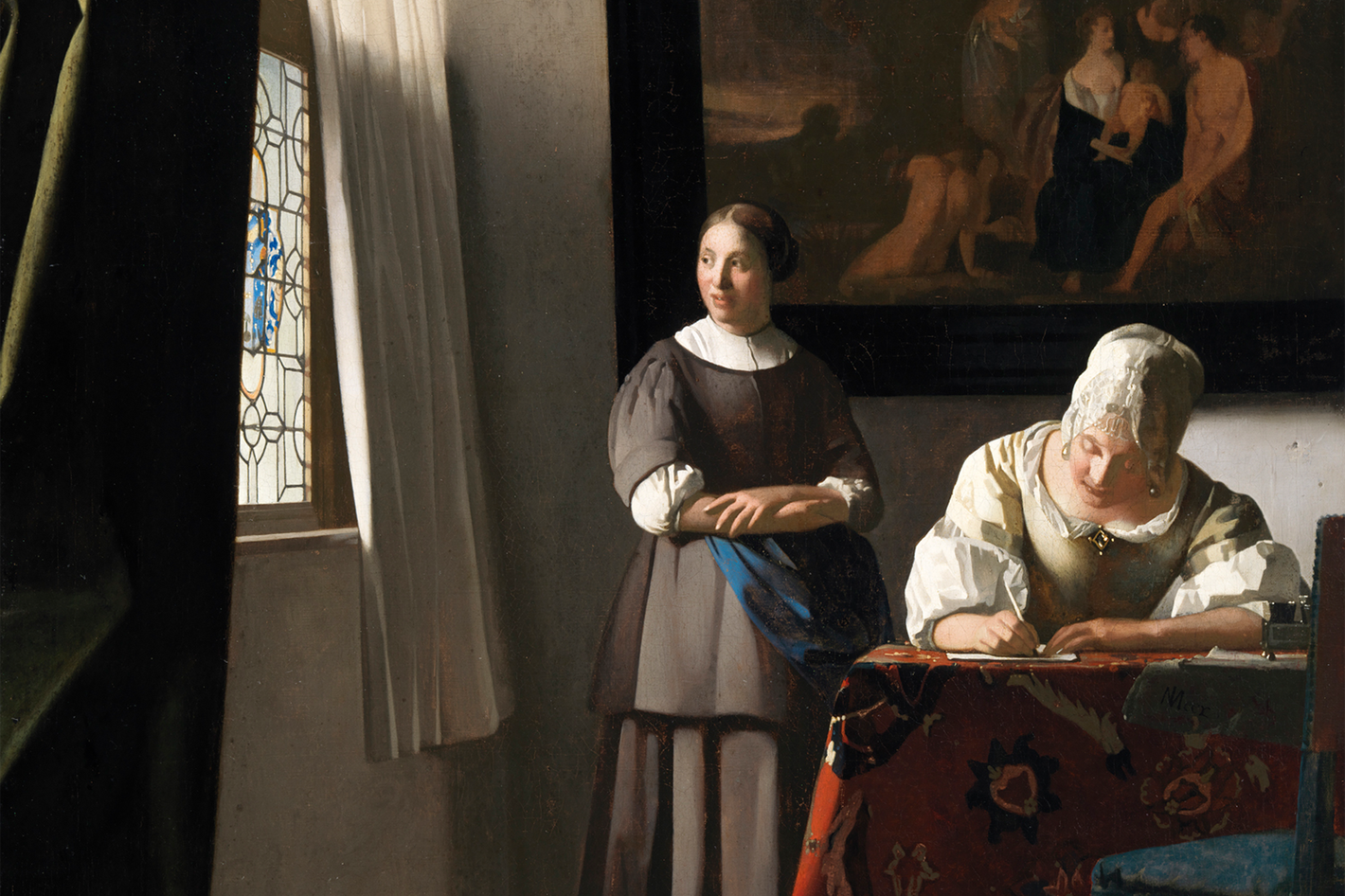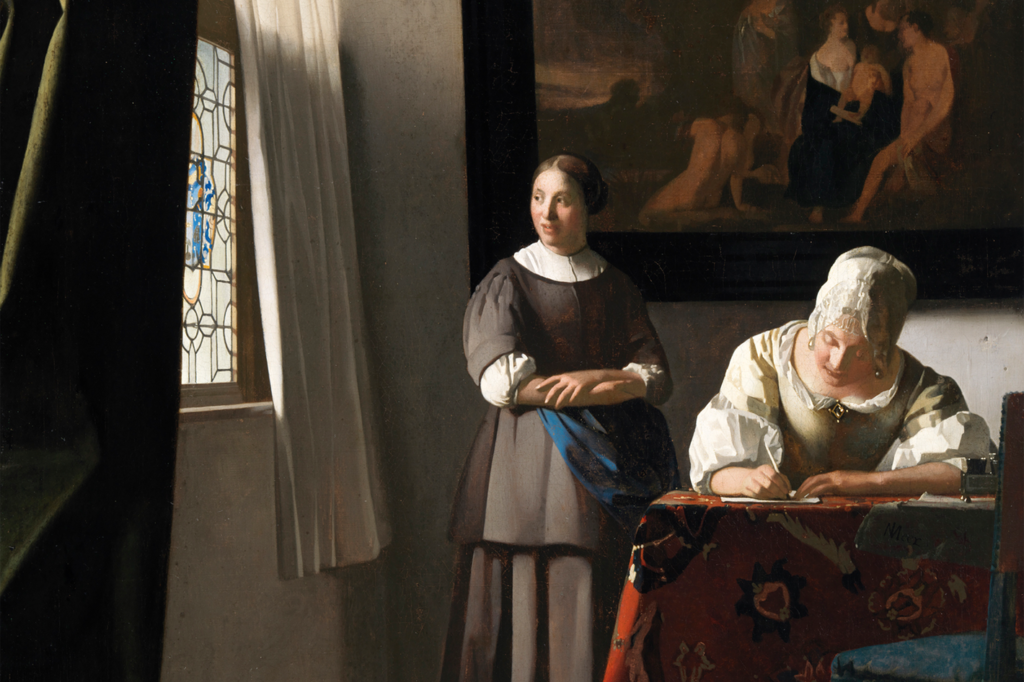
Does anyone write love letters anymore? We send emails. Or worse, texts, emoji. Fast, short, disposable. Once, love letters were slow to make and slower to arrive. They were keepsakes, confessions, feelings made physical. They had form. They were a genre unto themselves: often florid, achingly raw, very private. I’ve written them. Maybe you have, too. Now they’ve all but vanished — and with them, a particular architecture of emotion.
The Frick’s luminous new show, “Vermeer’s Love Letters,” captures the essence of that lost world. Curator Aimee Ng says it’s “a very Frick show,” by which she means there are no gimmicks or didactics, just the art. Three paintings, one room, no men. Each painting features two women — a lady and her servant — as well as a letter either being written or accepted. Only one painting, The Love Letter (on loan from the Rijksmuseum in the Netherlands), is explicitly identified as a billet-doux, but all three are suggestive of interior dramas; secret vulnerabilities and joys; two selves reaching toward one another.
In addition to The Love Letter, the show features Woman Writing a Letter With Her Maid (from the National Gallery of Ireland) and the Frick’s own Mistress and Maid, each presented on a deep-green wall. Begin on the right, with The Love Letter. We’re peering into a room from dark recesses, like voyeurs, the staged perspective echoing Velázquez’s Las Meninas. A map intrudes on our view of a woman in a silken yellow dress and fur-trimmed jacket. She has been playing a curvy lute, an activity apparently interrupted by her maid handing her the letter. They lock eyes conspiratorially; the maid is smiling, but the mistress’s expression is more enigmatic. Is she annoyed? Scared? Or already planning a response, coming up with a strategy?
Next is Mistress and Maid, likely the earliest of the three. Wait — are these the same women we’ve just seen, only from another angle? The woman wears the same fur-lined cape. The maid, who is dressed differently, hands her a note. The space is more intense and intimate, the mood somber, contemplative. We are in the room with them, the view up close and personal. The mistress appears to be lost in thought, a half-written letter before her. Could the maid be delivering a letter from another suitor?
Finally: Woman Writing a Letter With Her Maid. Here the two women are not engaged with each other; in fact, they occupy different worlds. The maid gazes out the window, her mouth slightly open, as if lost in boredom or a daydream. You can almost feel the sunlight warming her face. Meanwhile, the lady writes with rapt concentration. Behind them hangs The Finding of Moses — a possible reference to abandonment, or future motherhood. The details sing: a notebook on the floor, a red wax seal casually cast aside, the curtains stirred by a breeze. You could spend hours in this painting.
Vermeer is a poet of silence. A genre painter who transcends genre. He didn’t depict miracles, saints, or kings — he preferred rooms, women, light. Vermeer paints women less as muses or symbols than as thinkers, feelers, readers, and writers. His surviving works — just over 30 in all — form a kind of visual music or poetry: reverent, revelatory. Ultramarine blues, goldfinch yellows, clouded whites; the colors don’t shout but shimmer like halos.
Vermeer’s faith in painting is quiet, not doctrinal but devotional. These works, composed like altarpieces to the private self, don’t ask for belief. They ask for attention. Above all, he stills time. He invites us to slow down, to really look, to linger and notice. He reminds us that grace can reside in the angle of a head, the creases of a letter, light passing into shadow, a “little patch of yellow wall,” as Proust famously wrote. Just as the love letter is a form built on delay and distance, Vermeer comes to us from another time — and returns us to it.
The Frick’s austere new show about the Dutch master is a quiet triumph.

































































